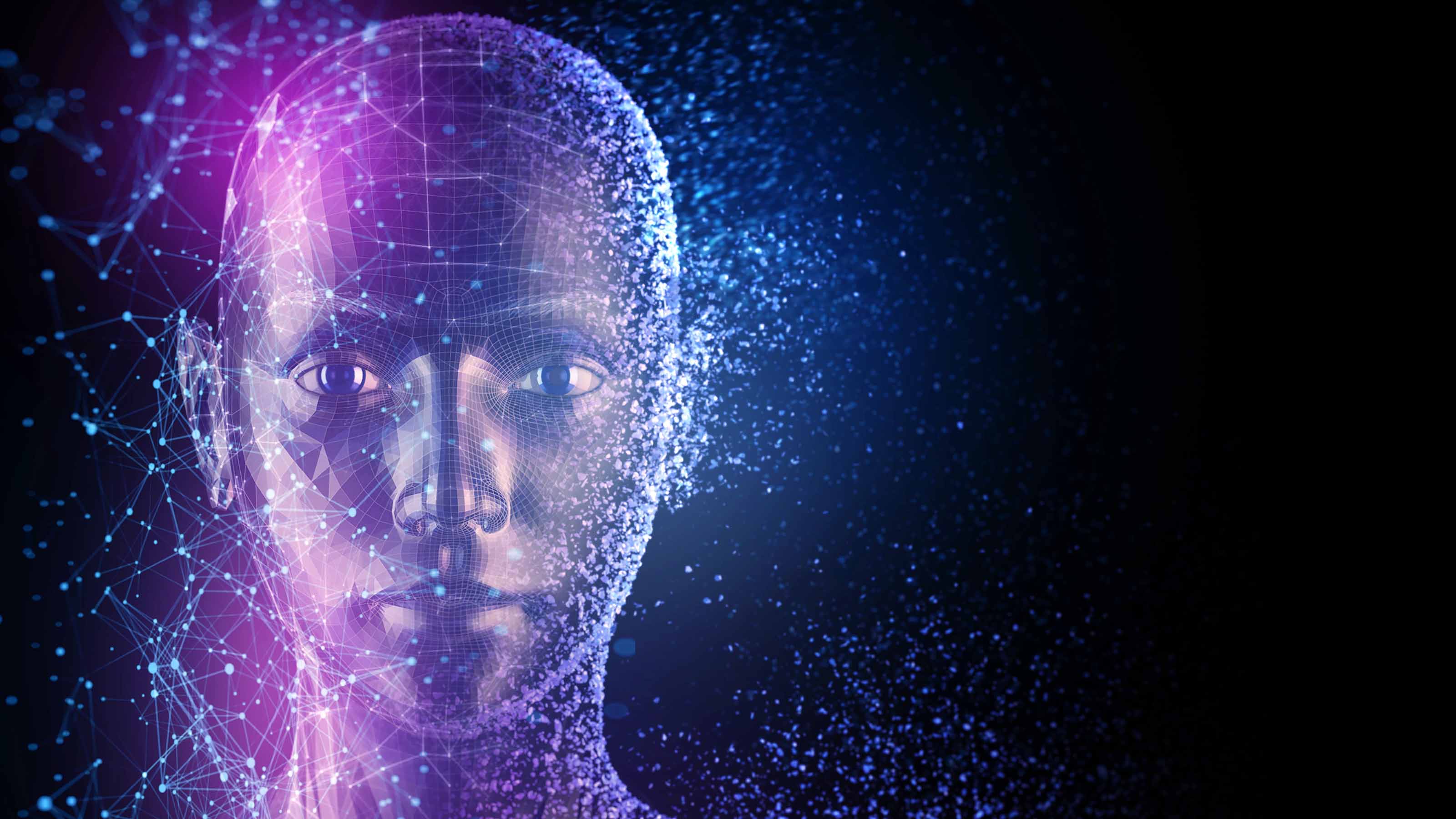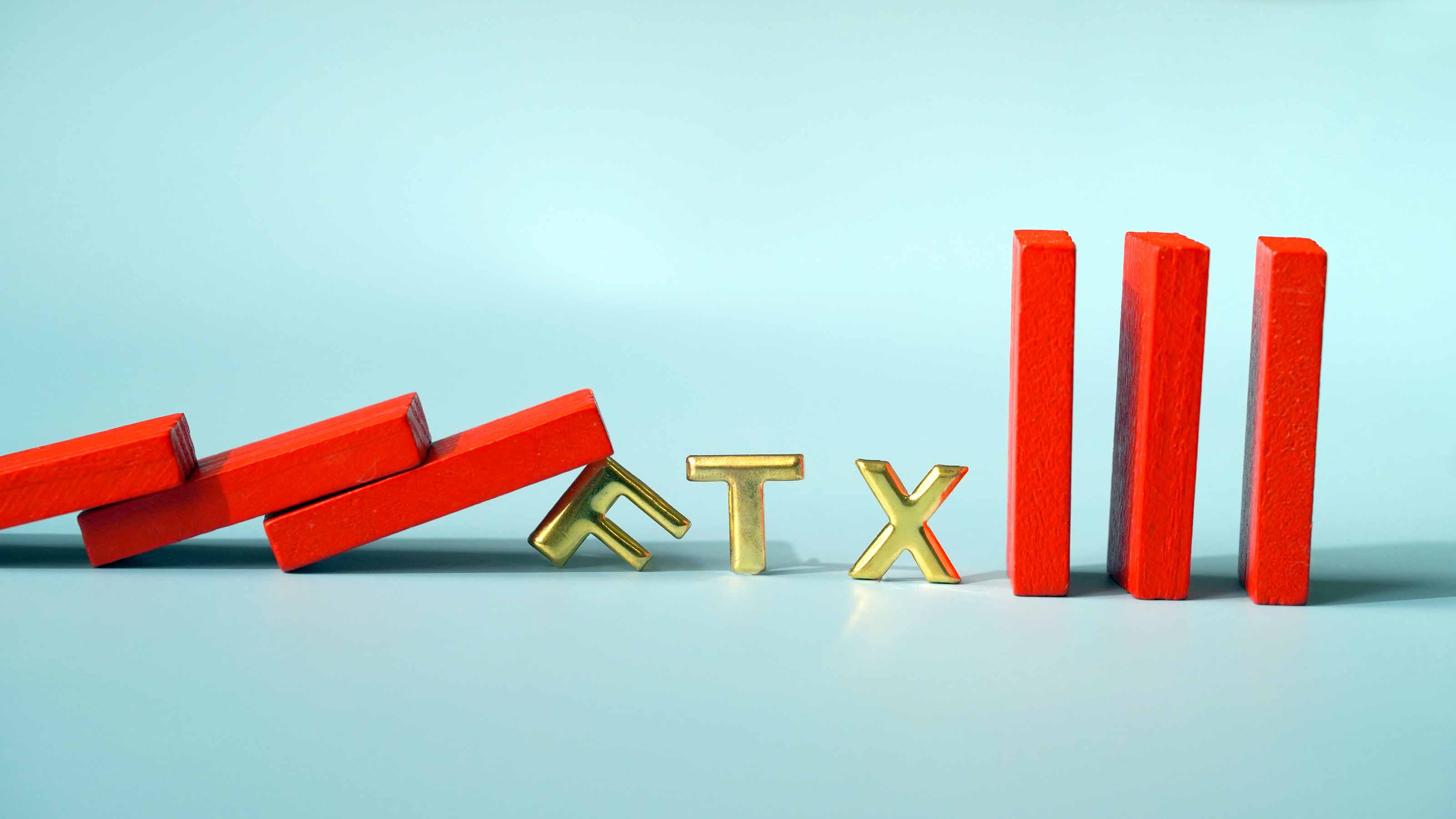Why Everyone Is Talking About NFTs
Non-fungible tokens are unique digital properties that use blockchain technology. Our FAQ will help you understand what all the buzz is about.


To many, the concept of an NFT is an enigma. Are they an investment? Collectible? Pricey fad? Scam? The answer: probably all of the above.
Non-fungible tokens take many forms. The most common NFTs to date are two-dimensional digital art, but an NFT can refer to any digital property—an image, video, audio file, even a tweet. Although no one is certain how valuable NFTs will be in the years to come, many experts agree that the market has a lot of potential for growth. From February 2021 to February 2022, the number of active users on OpenSea (registered users who have made at least one NFT transaction) rose from about 15,000 to more than 500,000.
A handful of large companies are expected to enter the market soon, including Niantic (the software-development company responsible for Pokemon Go), Twitter, Meta (formerly Facebook) and Epic Games. “NFTs will become a normal part of our lives,” says Adam Draper, founder of Boost VC, a venture capital firm. They will simply re-create the way we do many everyday things, he says, and allow us to “exchange value, create events, fund art and build community.”

Sign up for Kiplinger’s Free E-Newsletters
Profit and prosper with the best of expert advice on investing, taxes, retirement, personal finance and more - straight to your e-mail.
Profit and prosper with the best of expert advice - straight to your e-mail.
Why do NFTs exist?
NFTs were initially born out of the synthesis of blockchain—the technology behind cryptocurrencies—and digital files. NFTs have value because they create scarcity among otherwise infinitely available digital assets. They have already sparked an evolution of fine art collecting, and the universe of assets both physical and digital being transformed into NFTs is growing rapidly. NFTs have recently been minted to facilitate the authentication of fine liquor—verifying, for example, the authenticity of a $200,000 bottle of single-malt scotch.
Who creates them, and who buys them?
Anyone with access to the technology can create an NFT. After the Russian invasion of Ukraine, an NFT of Ukraine’s flag raised over $6.7 million for the country’s defenses. Paris Hilton recently minted an NFT collage of her and her new husband’s fondest memories. The market has been dominated by buyers with loads of cash. The most expensive known NFT—“Everydays: The First 5,000 Days,” a digital work by American artist Mike Winkelmann (known as Beeple)—sold for $69.3 million in March 2021.
Connor Gu, a tech analyst based in New York City, became interested in NFTs because he thought he might eventually issue NFTs of his late grandfather’s artwork. His grandfather was a prominent painter in China who founded an art academy. A cryptocurrency enthusiast, Gu bought ethereum when the price was low and then purchased his first NFTs in December 2021. “Most NFT projects are risky and will probably go to zero,” says Gu. “But there are a few winners. My strategy is to focus on a couple of collections that I know well.”
How do you buy an NFT?
Most NFTs are traded on online marketplaces designed to serve the market, such as Rarible and OpenSea, but NFTs are becoming available in more-familiar places. For example, the NBA’s Top Shot sells NFT video clips of its star players. And the New York Stock Exchange minted its first set of NFTs in April 2021, commemorating the first trades of six “notable” listings.
Generally, NFTs are only bought and sold with cryptocurrency, and ethereum is the most common cryptocurrency used. There are a number of exchanges where you can purchase ethereum, both centralized and decentralized (peer to peer). You will also likely have to set up a digital wallet, if you don’t have one already, to purchase an NFT.
Once you’ve chosen your crypto, you have to visit an NFT marketplace to shop for an NFT. When you’ve found the verified NFT you want to buy, you link your wallet to the marketplace and make your purchase. The NFT will appear in your digital wallet when the transaction is complete. It is fairly easy to verify that the purchase you are making is in fact the NFT you are looking for. To someone unfamiliar with the technology, though, it may be worthwhile to hire a developer to be sure that the code checks out.
When you buy art or a collectible, you put it on the wall or on a shelf. How do you view and share NFTs?
People often display them in their icon photo on social media. In order to do that, you generally have to link the digital wallet associated with an NFT to your social media account. There have been some traditional gallery exhibitions of NFT collections, but the true NFT version of the gallery takes many forms, well beyond social media. Your wallet is public, so anyone can see which NFTs you own. And when you buy an NFT from the popular Bored Ape collection, for instance, you join a community of other NFT owners, all with special access to communications from the NFT issuers about upcoming projects as well as exclusive events.
How much does an NFT cost?
You can spend hundreds of thousands of dollars to ride the latest digital trend. The average sale price of a CryptoPunk image, one of the early NFTs to hit the market, rose from about $100,000 in July to nearly $500,000 in November last year. Many of the NFTs from one of the most successful collections, Bored Ape Yacht Club, start at about $300,000, and some have sold for millions of dollars.
But the typical price range last year was $100 to $1,000, according to NonFungible.com. You may also have to pay buyer’s fees. OpenSea, the largest NFT marketplace, charges 2.5% per transaction. Others, such as SuperRare, charge even more. NFT sellers may also be subject to fees when selling an NFT on certain marketplaces.
Can you make money in the NFT market?
Maybe. NFT creators often earn a percentage each time their NFT is resold, thanks to smart contracts. Smart contracts are digital contracts that outline the terms of an NFT sale, including what percentage of the sale the original issuer will receive in the future whenever there is a new transaction. Because each transaction is recorded on the blockchain, these contracts are very easy to ensure. Someone may also issue an NFT without the intention of selling it and forgo earnings on future transactions.
There is also tremendous volatility in the NFT market, especially among the most sought-after NFTs. “NFTs are risky because they have two levers of volatility,” says Gu. Sellers raise prices of their NFTs when the price of ethereum goes down, he says.
Can you explain the technology?
To understand the concept of an NFT, start with the meaning of fungible versus non-fungible. A dollar bill is fungible because it is interchangeable with other dollar bills. NFTs are not interchangeable, and each NFT has a unique digital signature.
That unique digital signature, or code, is stored on the blockchain. Blockchain, the technology behind cryptocurrencies, is a digital ledger, or a record of transactions. It’s accessible to anyone and, significantly, it is also immutable, says Dr. Merav Ozair, a blockchain expert and fintech professor at Rutgers Business School. “Usually, a ledger is centralized; it is owned by somebody. But with blockchain, no matter who you are, as long as you have access to the internet, you can tap into it,” says Ozair.
Because an NFT is a token created on the blockchain, it carries all the features of the blockchain. “It’s immutable, traceable, trackable and transparent because everyone has access to it,” says Ozair. The true source of the value of NFTs is the authentication aspect of it, she says. “You can use them to prove the originality of any asset, whether physical or digital.”
What about scams?
The risk of scams, plagiarism and fraud is high. For example, the popularity of the Bored Ape Yacht Club NFTs triggered a slew of plagiarism attempts, says Daniel Yurcho, an NFT and blockchain expert. As with any investment, don’t buy something you don’t understand. Be sure that you are making your purchase at an accredited marketplace, and research the NFT before buying it.
I’m sure the IRS will want a cut?
Naturally. An NFT is generally treated as a capital asset, meaning any gain or loss you have on a full disposition (meaning, primarily, a sale) of the asset is treated as a capital gain or loss. An NFT probably meets the definition of a collectible under Internal Revenue Code Section 408, according to H&R Block. This has an impact on how much tax an investor pays on a disposition. While most long-term capital gains are taxed at a maximum rate of 20%, collectibles can be taxed at a rate of up to 28%. So higher-income taxpayers are likely to owe more tax on the sale of a collectible than on the sale of other capital assets.
Any other concerns?
Like bitcoin and other cryptocurrencies, NFTs have come under fire for their environmental impacts. Bitcoin mining already generates 38 million tons of CO2 per year, which is more than the carbon footprint of Slovakia, according to the Bitcoin Energy Consumption Index. Because NFTs call for the use of energy-intensive computer transactions to authenticate and sell the digital property, the environmental impact of NFTs is similar.
Get Kiplinger Today newsletter — free
Profit and prosper with the best of Kiplinger's advice on investing, taxes, retirement, personal finance and much more. Delivered daily. Enter your email in the box and click Sign Me Up.

Emma Patch joined Kiplinger in 2020. She previously interned for Kiplinger's Retirement Report and before that, for a boutique investment firm in New York City. She served as editor-at-large and features editor for Middlebury College's student newspaper, The Campus. She specializes in travel, student debt and a number of other personal finance topics. Born in London, Emma grew up in Connecticut and now lives in Washington, D.C.
-
 Stock Market Today: Stocks Gain on Tech, Auto Tariff Talk
Stock Market Today: Stocks Gain on Tech, Auto Tariff TalkThe Trump administration said late Friday that it will temporarily halt tariffs on some Chinese tech imports.
By Karee Venema
-
 Sam's Club Plans Aggressive Expansion: Discover Its New Locations
Sam's Club Plans Aggressive Expansion: Discover Its New LocationsSam's Club expansion plans will open up to 15 new stores each year. Learn where they plan to open in 2025.
By Sean Jackson
-
 All AI Regulations Are Not Created Equal: Kiplinger Economic Forecasts
All AI Regulations Are Not Created Equal: Kiplinger Economic ForecastsEconomic Forecasts As Congress regulates artificial intelligence, tech advocates urge lawmakers to define different areas of AI, as some are more dangerous than others.
By John Miley
-
 Best Banks for High-Net-Worth Clients
Best Banks for High-Net-Worth Clientswealth management These banks welcome customers who keep high balances in deposit and investment accounts, showering them with fee breaks and access to financial-planning services.
By Lisa Gerstner
-
 Text-Generating AI Faces Major Legal Risks: Kiplinger Economic Forecasts
Text-Generating AI Faces Major Legal Risks: Kiplinger Economic ForecastsEconomic Forecasts Major legal risks to text-generating artificial intelligence: Kiplinger Economic Forecasts
By John Miley
-
 Stock Market Holidays in 2025: NYSE, NASDAQ and Wall Street Holidays
Stock Market Holidays in 2025: NYSE, NASDAQ and Wall Street HolidaysMarkets When are the stock market holidays? Here, we look at which days the NYSE, Nasdaq and bond markets are off in 2025.
By Kyle Woodley
-
 Stock Market Trading Hours: What Time Is the Stock Market Open Today?
Stock Market Trading Hours: What Time Is the Stock Market Open Today?Markets When does the market open? While the stock market does have regular hours, trading doesn't necessarily stop when the major exchanges close.
By Michael DeSenne
-
 Bogleheads Stay the Course
Bogleheads Stay the CourseBears and market volatility don’t scare these die-hard Vanguard investors.
By Kim Clark
-
 What’s Next for Cryptocurrency After the Collapse of FTX?
What’s Next for Cryptocurrency After the Collapse of FTX?Is the cryptocurrency bubble bursting now, or does crypto still have a viable future?
By Rodrigo Sermeño
-
 A Guide to Yield Farming's Risk and Rewards
A Guide to Yield Farming's Risk and RewardsEarning cash on crypto using yield farming is popular. It's also risky. Here's what to know (and what to avoid).
By Randy Ginsburg